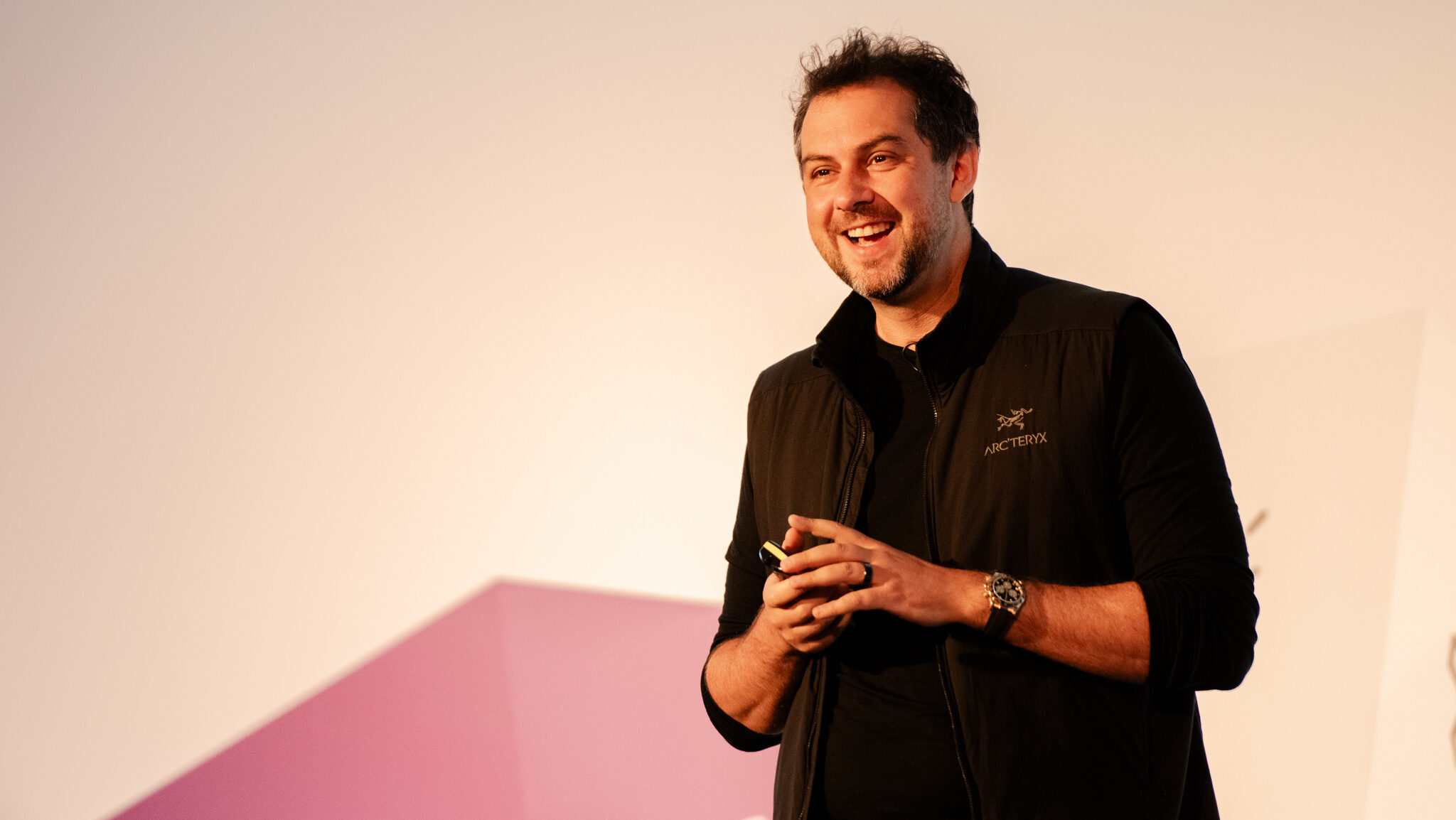In the first of three articles, Professor Megan Reitz and Professor Michael Chaskalson from Ashridge Executive Education discuss the first building block of mindfulness – ‘Allowing’ – and how developing an attitude of kindness and acceptance through 10 minutes of mindfulness practice every day can help you and your team members take your minds out of automatic.
Your mind is extraordinary. To perform its amazing feats, your mind has an information processing capacity greater than the combined power of all the computers, routers and internet connections on Earth.
So with this impressive capacity available to us, how do we use our minds?
The simple answer is not as well as we might. For a start, about half the time we are awake we are thinking about something other than what is going on at the time and we keep trying to multitask – ordering a pizza while walking the dog and Skyping a cousin in Australia.
The problem is that although we have all that enormous potential at our disposal, our minds don’t come with an instruction manual. As miraculous as they are, we don’t know how to use them to anything like their full capacity. All we get is some rudimentary guidance.
Most of the time our minds just run on automatic and we’re barely aware that they’re doing that. This limits our creativity at work, impacts relationships with colleagues, affects our health (leading to absenteeism and stress) and makes us less resilient to change.
We can do better!
The good news is that we can do so much better, and it’s not that hard. We just need to know how to use our minds more effectively. The training programmes we’ve led throughout the world and our research at Hult International Business School tell us that it’s possible for us all to do this – and when we do so, life and work go much better.
In the workplace we become more resilient, we have stronger relationships and we’re better able to manage unexpected events. We feel more awake, more alive and more creative in our jobs.
When we’re better able to be kind to ourselves it can help us be kinder to others.
There are simple things you can do every day to help you shape your mind so that whatever life brings you’re better able to respond creatively. And the even better news is that it only takes 10 minutes per day. We call that ‘mind time’, and we all need it.
If you can set aside 10 minutes each day to engage in mind time practices – which you can access for free online here – then in a few months things should get better. There are some simple practices that you can do every day.
Learning to AIM
Mind time practices will help you develop three key capacities, collectively referred to as ‘AIM.’ These fundamental building blocks of mindfulness, as we see it, are:
-
Allowing – an attitude of kindness and acceptance
-
Inquiry – a curiosity about your present-moment experience
-
Meta-awareness – the ability to observe your thoughts, feelings, sensations and impulses as they are happening
Throughout this series of articles we will explore how by developing each building block of mindfulness – A, I and M – through 10 minutes of mind time every day, you and your team members can build a better working life.
1. Allowing – an attitude of kindness and acceptance
Allowing involves approaching a situation with an attitude of openness and kindness to yourself and others. It’s not about being passive or giving up; it’s about facing up to what is actually going on in each passing moment and using our energy more productively, rather than wasting it on wishing things were other than they are.
Allowing has two sides to it. With the wisdom side, you let what is the case be the case. This means recognising that this moment – this very moment, right now – couldn’t be anything other than it is.
What we do now shapes what comes next, and when our actions are rooted in allowing and acknowledging the current reality of things then they’re very much more effective.
As well as a wisdom side to allowing, there’s also compassion. Compassion involves being kinder and more accepting towards everyone involved in each situation – yourself and others.
Compassion needs to start with yourself. This often goes against our assumptions about what compassion or kindness is all about. But when we’re better able to be kind to ourselves it can help us be kinder to others.
It’s so easy, and so common, to be harshly self-critical. We can sometimes speak to ourselves in ways we’d never speak to others. ‘Where did I leave my keys? I’ve lost them. I’m such an idiot!’ If your friend told you she’d lost her keys and you used that kind of language to her, she’d think it very odd.
We’re all doing our best to make a life and to get by. Yes, some people can annoy us. Some can seem harsh and unkind. But if we really understood what it’s like from their side – what it’s like to be them – maybe we’d be less critical.
The workplace application of ‘allowing’
Example 1: Allowing helps us to be more compassionate and appreciative towards others and ourselves in the workplace.
Julia is a bubbly and busy lady who is fun to be around and with a wide array of interests and commitments. She approached us hoping we might help her with some of the issues she faced at work, especially to do with her relationships.
After she began mind time she described a key change that she had been able to make: ‘I talk at a thousand miles an hour, I have an agenda that is thirty points long, and I have been exhausting to be around when we’ve got a lot to do. I’ve really made a conscious effort to slow down, and take the time to, not so much just focus on the task, but recognise there’s a person in front of me, and they’re having their own experience.’
Allowing helps us to accept that the perfect work–life balance may just be too tricky to perpetually sustain.
Allowing enabled her to slow down enough to take note of the other person’s needs and to empathise with their situation. This small change in her behaviour resulted in a huge change in her relationships.
Those she worked with felt more seen, heard and understood. Julia was then able to make more informed decisions about how to do things and her colleagues felt more like helping her. She achieved more at work and felt less strained.
Example 2: Allowing helps us question our assumptions around work-life balance
Allowing helps us to accept that the perfect work–life balance may just be too tricky to perpetually sustain.
Life is often not quite as accommodating as we want it to be. Our ideal work–life balance is wrenched out of the ground by something that happens. Our best intentions to go to the gym this week are overturned by an event at work, which just has to be prioritised. We become ill and this pulls down our ability to perform at work and in our other roles.
Allowing is about being ‘good enough’. It is about understanding that we are human beings and we can’t control the external environment, but we can influence our respond to it.
It is understanding that sometimes our best intentions to balance and prioritise don’t play out, but knowing that we can pause, get things back in perspective and reset things again. In short, allowing is about caring for ourselves and those around us.
To read more about Mind Time, you can purchase the book here.
In the first of three articles, Professor Megan Reitz and Professor Michael Chaskalson from Ashridge Executive Education discuss the first building block of mindfulness – ‘Allowing’ – and how developing an attitude of kindness and acceptance through 10 minutes of mindfulness practice every day can help you and your team members take your minds out of automatic.
Your mind is extraordinary. To perform its amazing feats, your mind has an information processing capacity greater than the combined power of all the computers, routers and internet connections on Earth.
So with this impressive capacity available to us, how do we use our minds?
The simple answer is not as well as we might. For a start, about half the time we are awake we are thinking about something other than what is going on at the time and we keep trying to multitask – ordering a pizza while walking the dog and Skyping a cousin in Australia.
The problem is that although we have all that enormous potential at our disposal, our minds don’t come with an instruction manual. As miraculous as they are, we don’t know how to use them to anything like their full capacity. All we get is some rudimentary guidance.
Most of the time our minds just run on automatic and we’re barely aware that they’re doing that. This limits our creativity at work, impacts relationships with colleagues, affects our health (leading to absenteeism and stress) and makes us less resilient to change.
We can do better!
The good news is that we can do so much better, and it’s not that hard. We just need to know how to use our minds more effectively. The training programmes we’ve led throughout the world and our research at Hult International Business School tell us that it’s possible for us all to do this – and when we do so, life and work go much better.
In the workplace we become more resilient, we have stronger relationships and we’re better able to manage unexpected events. We feel more awake, more alive and more creative in our jobs.
When we’re better able to be kind to ourselves it can help us be kinder to others.
There are simple things you can do every day to help you shape your mind so that whatever life brings you’re better able to respond creatively. And the even better news is that it only takes 10 minutes per day. We call that ‘mind time’, and we all need it.
If you can set aside 10 minutes each day to engage in mind time practices – which you can access for free online here - then in a few months things should get better. There are some simple practices that you can do every day.
Learning to AIM
Mind time practices will help you develop three key capacities, collectively referred to as ‘AIM.’ These fundamental building blocks of mindfulness, as we see it, are:
Allowing – an attitude of kindness and acceptance
Inquiry – a curiosity about your present-moment experience
Meta-awareness – the ability to observe your thoughts, feelings, sensations and impulses as they are happening
Throughout this series of articles we will explore how by developing each building block of mindfulness – A, I and M – through 10 minutes of mind time every day, you and your team members can build a better working life.
1. Allowing – an attitude of kindness and acceptance
Allowing involves approaching a situation with an attitude of openness and kindness to yourself and others. It’s not about being passive or giving up; it’s about facing up to what is actually going on in each passing moment and using our energy more productively, rather than wasting it on wishing things were other than they are.
Allowing has two sides to it. With the wisdom side, you let what is the case be the case. This means recognising that this moment – this very moment, right now – couldn’t be anything other than it is.
What we do now shapes what comes next, and when our actions are rooted in allowing and acknowledging the current reality of things then they’re very much more effective.
As well as a wisdom side to allowing, there’s also compassion. Compassion involves being kinder and more accepting towards everyone involved in each situation – yourself and others.
Compassion needs to start with yourself. This often goes against our assumptions about what compassion or kindness is all about. But when we’re better able to be kind to ourselves it can help us be kinder to others.
It’s so easy, and so common, to be harshly self-critical. We can sometimes speak to ourselves in ways we’d never speak to others. ‘Where did I leave my keys? I’ve lost them. I’m such an idiot!’ If your friend told you she’d lost her keys and you used that kind of language to her, she’d think it very odd.
We’re all doing our best to make a life and to get by. Yes, some people can annoy us. Some can seem harsh and unkind. But if we really understood what it’s like from their side – what it’s like to be them – maybe we’d be less critical.
The workplace application of ‘allowing’
Example 1: Allowing helps us to be more compassionate and appreciative towards others and ourselves in the workplace.
Julia is a bubbly and busy lady who is fun to be around and with a wide array of interests and commitments. She approached us hoping we might help her with some of the issues she faced at work, especially to do with her relationships.
After she began mind time she described a key change that she had been able to make: ‘I talk at a thousand miles an hour, I have an agenda that is thirty points long, and I have been exhausting to be around when we’ve got a lot to do. I’ve really made a conscious effort to slow down, and take the time to, not so much just focus on the task, but recognise there’s a person in front of me, and they’re having their own experience.’
Allowing helps us to accept that the perfect work–life balance may just be too tricky to perpetually sustain.
Allowing enabled her to slow down enough to take note of the other person’s needs and to empathise with their situation. This small change in her behaviour resulted in a huge change in her relationships.
Those she worked with felt more seen, heard and understood. Julia was then able to make more informed decisions about how to do things and her colleagues felt more like helping her. She achieved more at work and felt less strained.
Example 2: Allowing helps us question our assumptions around work-life balance
Allowing helps us to accept that the perfect work–life balance may just be too tricky to perpetually sustain.
Life is often not quite as accommodating as we want it to be. Our ideal work–life balance is wrenched out of the ground by something that happens. Our best intentions to go to the gym this week are overturned by an event at work, which just has to be prioritised. We become ill and this pulls down our ability to perform at work and in our other roles.
Allowing is about being ‘good enough’. It is about understanding that we are human beings and we can’t control the external environment, but we can influence our respond to it.
It is understanding that sometimes our best intentions to balance and prioritise don’t play out, but knowing that we can pause, get things back in perspective and reset things again. In short, allowing is about caring for ourselves and those around us.
To read more about Mind Time, you can purchase the book here.







